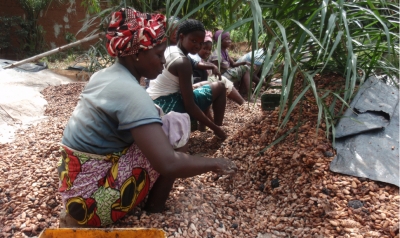
Chocolate aficionados will perhaps say chocolate is the most endearing invention by humans. We eat it when we are happy and when we are sad; when we celebrate something and when we want to cheer ourselves up. Basically, we don’t need a reason to bite into this delight.
It wouldn’t be an exaggeration to say that it is the most popular sweet treats in the world. The global consumption is estimated to be at least 7.2 million metric tonnes every year.
But here comes the bitter truth – chocolates will soon become rare and expensive.
Chocolate production is threatened by climate change. Cacao trees, from which chocolates are produced, require certain conditions to grow, but with the changing climate, these conditions are no longer available.
How are chocolates produced?
Chocolate comes from fruits called pods that grow on cacao trees. Its seeds, cacao beans, are the main ingredient in chocolate. They are used to make chocolate paste, cocoa powder, cocoa butter and so on. These cacao trees grow only in the warm, humid regions near the Equator, largely in areas designated as rainforests. These places include parts of South America, Africa, and Southeast Asia.
Cacao seeds are harvested by hand and placed in large fermentation trays. Fermentation, which takes two to seven days, gives the beans the chocolate flavour and aroma. The beans are then dried under the sun and are taken to chocolate factories, where they are cleaned and roasted in rotating ovens. This process removes the seeds’ coating, giving us the remaining part – the nib. The nib is then made into a paste called chocolate liquor, which is then used with other ingredients such as cacao butter, milk and sugar to make chocolates.
The story of chocolates
- Chocolate’s history goes back to 450 BC, when the Aztecs and the Mayans (ancient people of central Mexico) used cacao beans to concoct a drink called xocoatl. It was quite bitter and frothy, and was often mixed with chilli. The Mayans and the Aztecs believed that chocolate was a gift from the gods. (So, do we!)
- This chocolate drink was brought to Europe during the 16th Century when the Spanish started colonising South America.
- A powdered form of chocolate was prepared after ‘cocoa press’ was invented in 1828. Then people started adding milk mass-produced. The hitherto drink of the elite became available for others.
- British chocolate J.S. Fry and Sons introduced the chocolate bar in 1847. In the late 1800s, Milton S. Hershey began selling chocolate-coated caramels in the U.S. He then developed his own formula for milk chocolate. In 1923, the Mars Co. developed the Milky Way bar by putting nougat (made with sugar, honey and nuts) inside a chocolate bar.
- As the years progressed, chocolate lent itself to innovation. It took different forms, depending on the ingredients, the percentage of cocoa, source of the beans and production method.
Types of chocolate
Dark, milk and white are the three main varieties of chocolates. While dark chocolate has chocolate liquor, cocoa butter, sugar and vanilla, milk chocolate has milk additives. White chocolate is milk chocolate without the chocolate liquor. (Since there is no cacao involved in the production of white chocolate, some argue that it is not chocolate at all.) Dark chocolates are believed to have a number of health benefits. They are good for heart and brain. And are often associated with positive effects on mood. But too much chocolate can be unhealthy because it contains high levels of sugar and fat which can make people put on weight. It can also cause tooth cavity among other issues.
Impending chocapocalypse
- Cacao trees require steady temperatures, high humidity, lots of rain, nitrogen-rich soil, and protection from wind to thrive. Regions where cacao grows best often have high humidity levels – 100% during the day and 70-80% at night.
- But with climate change, these conditions are changing. For cacao plants, the change in humidity is a major issue. As the globe heats up, the stages of the water cycle become erratic – floods and droughts become more prevalent and extreme. In tropical environments, rising temperatures lead to increased evaporation rates and decreased humidity, causing cacao crops to suffer.
- Cote d’Ivoire, Ghana (both in Africa), and Indonesia are the leading cacao-producing countries. But researchers show that these countries will experience a 2.1 degree Celsius increase in temperature by 2050. This will in turn affect rainfall and humidity. As a result, viable land for cacao production will significantly shrink.
- This has prompted experts to predict that chocolate productions will take a big hit. While chocolate will not go away completely off the shelves, it will become rare and expensive. The market may shift from cheaper, more accessible chocolates to more luxurious ones. That is, in the coming years, we may have to shell out more for chocolates.
Did you know?
- Chocolate production can also harm the environment. Farmers often clear forests to make room for cacao plantations. About 70% of illegal deforestation in Cote d’Ivoire is related to cacao farming.
- Cacao plants consume a lot of water. According to National Geographic, it takes 1,700 litres of water to make a 100-gm chocolate bar. That’s about 10 bathtubs of water for one bar of chocolate.
Picture Credit : Google

